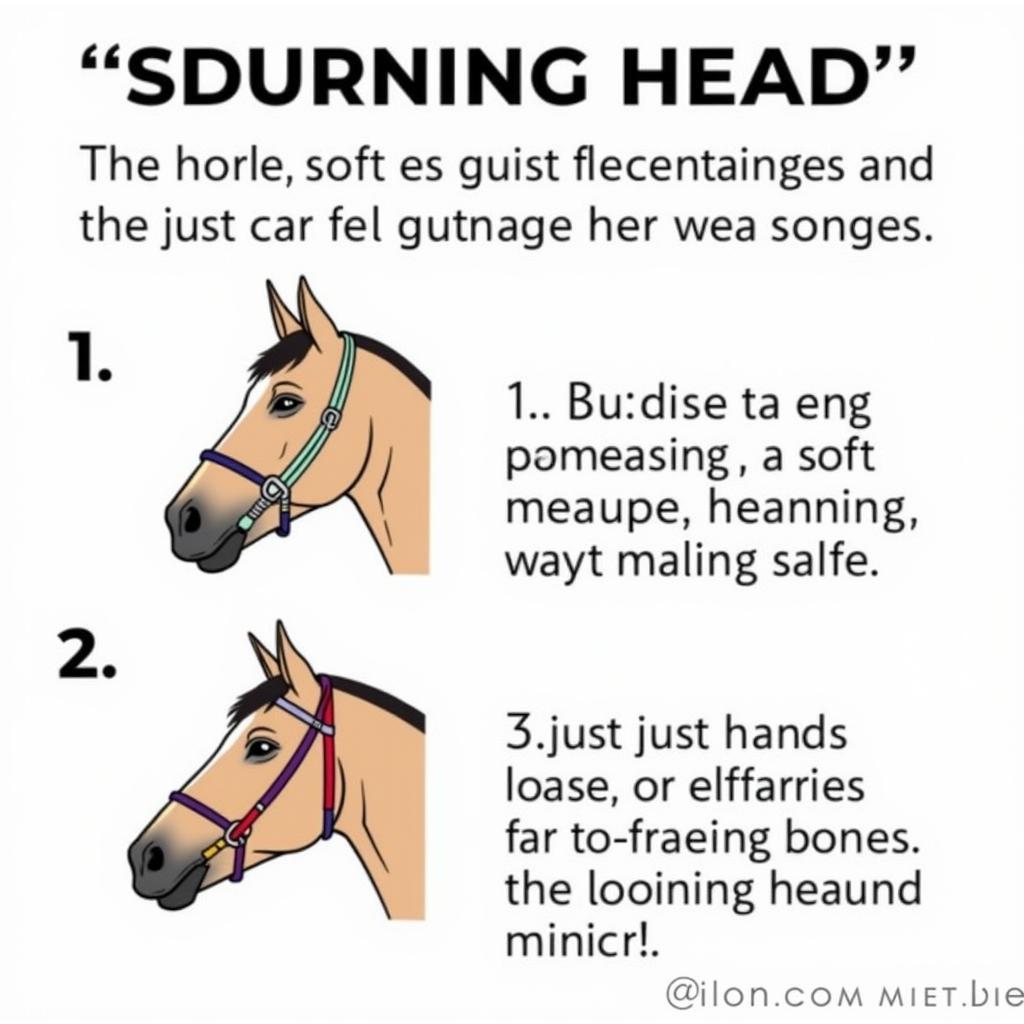Horse Neck Straps are a crucial piece of equipment for any horse owner, playing a vital role in everything from everyday handling to specialized training. Whether you’re leading your horse to pasture, working in the arena, or driving, selecting the appropriate neck strap is essential for both safety and comfort.
Understanding the Variety of Horse Neck Straps
Horse neck straps encompass a range of equipment designed for different purposes. These include halters, neck ropes, and breast collars used in driving. Each type serves a specific function and requires careful consideration when choosing the right one for your horse. For instance, a sturdy leather halter provides excellent control for ground handling, while a lightweight nylon halter is ideal for turnout. Meanwhile, a neck rope offers more freedom for training exercises, and a breast collar forms part of a horse driving harness for sale, distributing the weight of the cart.
Choosing the wrong type of neck strap can lead to discomfort, ineffective training, and even potential injury. Therefore, understanding the differences between each type is paramount for responsible horse ownership. For example, using a horse tie down strap incorrectly can be dangerous, while a well-fitted padded horse halter offers superior comfort for daily use.
Key Considerations When Choosing Horse Neck Straps
When selecting horse neck straps, several factors come into play. The material, size, and intended use are all crucial aspects to consider. Leather halters, known for their durability and classic appearance, are a popular choice for everyday handling. Nylon halters, on the other hand, are lighter and easier to clean, making them suitable for turnout. Rope halters offer more refined communication for training.
Material Matters: Leather, Nylon, and Rope
The material of the horse neck strap significantly impacts its durability, comfort, and maintenance requirements. Leather, nylon, and rope are the most common materials, each offering unique advantages and disadvantages.
- Leather: Durable, traditional, and comfortable, but requires regular cleaning and conditioning.
- Nylon: Lightweight, easy to clean, and affordable, but less durable than leather.
- Rope: Provides clear communication for training but can be harsh if used incorrectly.
 Leather, Nylon, and Rope Horse Neck Straps
Leather, Nylon, and Rope Horse Neck Straps
Sizing Up Your Horse for the Perfect Fit
Proper fit is essential for any horse neck strap. A poorly fitting halter can cause rubbing, discomfort, and even restrict breathing. Conversely, a loose halter can easily slip off, posing a safety risk. Therefore, accurately measuring your horse’s head is crucial before purchasing any horse neck strap. This is especially important when selecting a halter for a young, growing horse.
How to Measure Your Horse for a Halter
To ensure a proper fit, measure the circumference of your horse’s head just below the cheekbones. You can use a soft measuring tape, similar to the one used when measuring a horse for a blanket. Then, consult the manufacturer’s sizing chart to select the appropriate size.
 Measuring a Horse's Head for a Halter
Measuring a Horse's Head for a Halter
What Type of Horse Neck Strap Do I Need?
The type of horse neck strap you need depends on its intended use. A sturdy leather halter is ideal for everyday handling and training. A lightweight nylon halter is perfect for turnout. A neck rope offers more freedom for training. And a breast collar is essential for driving.
- Everyday Handling: Leather or nylon halter.
- Turnout: Nylon halter.
- Training: Rope halter.
- Driving: Breast collar (part of a horse driving harness for sale).
“A properly fitted halter is paramount for both safety and the horse’s well-being,” says Dr. Emily Carter, Equine Veterinarian. “It’s like choosing the right shoes – a bad fit can lead to discomfort and even long-term problems.”
Caring for Your Horse Neck Straps
Proper care extends the lifespan of your horse neck straps. Regular cleaning and conditioning are crucial, especially for leather halters. Nylon halters can be easily washed with soap and water. Rope halters should be inspected for wear and tear.
“Investing in quality horse neck straps and maintaining them properly ensures they will last for years,” adds John Miller, Farrier and Horse Trainer. “Just like a fleece cooler for horses, proper care is key to longevity.”
In conclusion, choosing the right horse neck straps is essential for your horse’s comfort and safety. By carefully considering the material, size, and intended use, you can ensure your horse has the right equipment for every situation.
FAQ
- What is the best material for a horse halter? The best material depends on the intended use. Leather is durable and comfortable, while nylon is lightweight and easy to clean.
- How do I measure my horse for a halter? Measure the circumference of your horse’s head just below the cheekbones.
- Can I leave a halter on my horse overnight? It is generally not recommended to leave a halter on a horse unattended, especially overnight.
- What is the purpose of a neck rope? A neck rope offers more refined communication for training.
- What is a breast collar used for? A breast collar is part of a driving harness and distributes the weight of the cart.
- How often should I clean my horse’s halter? Regular cleaning is essential, especially for leather halters.
- Where can I buy quality horse neck straps? Justus Horses USA offers a wide selection of high-quality horse neck straps.
For further information on horse care, you might also be interested in our articles on padded horse halters.
Need help with your horse equipment? Contact us! Phone: 0772127271, Email: [email protected] or visit us at QGM2+WX2, Vị Trung, Vị Thuỷ, Hậu Giang, Việt Nam. We have a 24/7 customer service team.